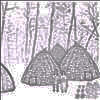My Texas History Notebook
My Texas History Notebook lessons are designed to engage students through activities and group-oriented projects. The activities include creating maps, conducting debates, and role playing. Some of the lessons bridge contemporary issues with historical events, such as the lessons Branches of State Government and Immigration to Texas.

Analyzing Political Parties
Analyzing Political Parties requires students to analyze several issues related to the campaigns of political candidates. Students discuss issues, the candidates positions on the issues, and how they effect Texans.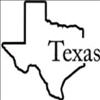
Annotated Map of the Civil War
The Annotated Map of the Civil War lesson brings students together in groups of four to complete an annotated map showing Texas's role in the Civil War.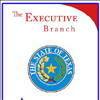
Branches of State Government
Branches of State Government lesson uses Trading Cards that emphasize the roles and responsibilities for each branch of the Texas State Government.
Bringing Government Terms to Life
Bringing Government Terms to Life involves problem solving group work that will engage students and teach them the basic principles reflected in the Texas Constitution while communicating in written, oral and visual forms.
Causes of the Texas Revolution: Mexican/Texan Talk-it-Out
Causes of the Texas Revolution: Mexican/Texan Talk-it-Out requires students to demonstrate understanding of the Texas Revolution by participating in a "debate" between Texans and Mexicans.
Celebrity Ball for Famous Texans
Celebrity Ball for Famous Texans requires students to research, role play and create a resume on a famous Texan. They will choose their roles, research their topic, and write a resume and portray their famous Texan.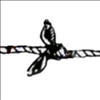
Civil War Tug of War
Civil War Tug of War is an experiential exercise that assists students in understanding the events and issues that shaped the history of Texas during the Civil War.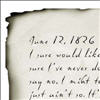
Colonization of Texas: Letters to Stephen F. Austin
The Colonization of Texas: Letters to Stephen F. Austin uses fictional letters in a response group activity that requires students to evaluate potential colonists to Austin's colony..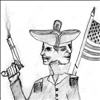
Comparing the American and Texas Revolutions
Comparing the American and Texas Revolutions enables the students to understand the similarities and differences of these two historic conflicts.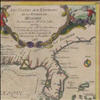
Early Explorers: Race for Empire
Early Explorers: Race for Empire helps students understand the urgency that European countries had in claiming new lands for their empires.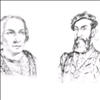
Explorers of Texas
Explorers of Texas allows students to learn about the different explorers of Texas. Working with a partner, students read about the different explorers, and then decide which explorer had the most impact on Texas.
Human Statues to the Progressive Era
Human Statues to the Progressive Era enables students to identify the leaders and movements of the progressive era and its impact on Texas.
Immigration to Texas
Immigration to Texas requires students to demonstrate an understanding of immigrant groups, demographics, and settlement patterns and to create a PowerPoint presentation.Immigration to America
Immigration to America asks students to explore the how immigrants came to America in the late nineteenth and early twentieth century through primary sources such as newspapers, photographs and film footage.
The Law of April 6, 1830
The Law of April 6, 1830 helps students to better understand the emotional issues involved with the Law of April 6, 1830. Through this experiential exercise, students will understand these emotions after several new "laws" have been passed that affect them.
Life in a Spanish Mission
Life in a Spanish Mission enables students to experience life in a Spanish Mission as a Native American. The student will learn Spain's reasons for establishing Catholic missions and the impact of the missions on the culture of Native Americans.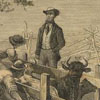
Cattle Branding in Texas
Students will analyze pictures and answer questions from the slide show to find out more about the cattle branding history and learn how to read brands. They will record the similarities and differences between American and Spanish branding influences and design their own brand with a partner.
Republic of Texas Presidential Debate
Republic of Texas Presidential Debate helps students describe the presidencies of Sam Houston and Mirabeau Lamar and how each president dealt with the issues facing the Republic of Texas.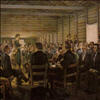
Texas Declaration of Independence
The Texas Declaration of Independence recreates the situation the Texans experienced when they wrote their Declaration of Independence. This activity introduces students to the challenges that arise when people form their own government.